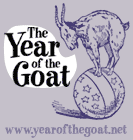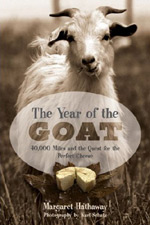The facility has the same feel as a human hospital, but since the animals who come there are so massive, the rooms are built on a much larger and easier-to-clean scale. The ceilings are high, the doors are wide and latch securely, and the concrete floors slope gently to a drain. Dr. Lawhorn showed us the progression of rooms an animal would be taken to if it were brought in for treatment: outside, there are barns for boarding the animals and a "lameness assessment arena," in which the animals would first be examined. Inside, there were more examining rooms, with stanchions to keep the animals still during more thorough and, for those with reproductive issues, more personal inspections. If surgery were warranted, the animal would then be led to a padded room, where anesthesia would be administered. Once the animal was tranquilized, it would be hooked into a track in the ceiling that suspends the animal and swing it to the operating room. In the operating room, there are lights and equipment, much as there would be in a human hospital, but there is no bed for the patient to lie on; surgery is conducted with the animal in a standing position, supported by a sling from the track in the ceiling. Following surgery, the animal is moved to an indoor stall for recovery. If a foal or calf is involved, it's usually placed on a gurney rimmed with padded bumpers until it's well enough to stand in a stall. At a central station, doctors and students can keep a constant monitor on the patient's recovery.
Many of the veterinarians have offices on the second floor of the hospital, but the goat research facility is located a short distance away in another building. Following Dr. Lawhorn, we drove to their offices, passing a very tall man loping along to drop off his camel, and then driving through cow pastures to a small building and a set of barns. Dr. Lawhorn explained that they keep a small herd of dairy cows, which the students learn to milk during their first year of vet school. Many aspiring veterinarians have never spent time on a farm, she said, so at Auburn they introduce them to the daily care of livestock, as well as medical treatments.
In the research facility, Dr. Lawhorn showed us her laboratory, which was filled with microscopes, glass tubes, and various machines that looked complicated and very scientific. She also showed us her equipment for semen collection: an artificial vagina and an electric ejaculator. Not being a scientist, it's easy to forget that analysis always begins with the clean collection of a sample. In the case of goat reproduction, that means gathering semen. In all the talk we'd heard of artificial insemination and "buck collection," I hadn't really considered what it entailed. Looking at the rubber sheath and the sort of rounded-off rocket, I understood a little better why farmers often hire professionals to collect their bucks.
As we were poking around the lab, Dr. Pugh came in to introduce himself. A voluble, bald man in a wrestling sweatshirt, he spoke quickly and in a thick accent, suggesting that we all go to the barns to look at the goats. As we looked at the Boer goats in his care, he told us a little about his background and his beliefs. The son of a West Georgia farmer, who once kept a herd of his own goats, Dr. Pugh has watched the changing tides of goat keeping in the region, and has strong opinions about farming and animal management. Though he instructs students and owners on preventative measures, he believes that the ideal scenario would be one in which animals have been bred for natural resistance to parasites and disease. If a serious illness, like CAE or scrapies, occurs in a herd, Dr. Pugh believes in a "scorched earth" policy to ensure eradication. His favorite text for disease management, he said, is Niccolo Machiavelli's The Prince.
Because he is such a charismatic person, and because he backs everything up with science, Dr. Pugh can say things like this without sounding crazy. His enthusiasm for the animals, too, is contagious, and it seems entirely likely that support for Auburn's goat program has grown through the sheer force of Dr. Pugh's energy. Though he'll work on other livestock, his favorite animal is the meat goat, and you could see in his interaction with the Boers how much genuine affection he had for the animals.
Before we left, he and Dr. Lawhorn performed another sonogram on a Boer doe, explaining the procedure and giving us a printout of the tiny goat fetus. Dr. Pugh pointed out the heart beats on the monitor, and showed us which little blobs were goats, and which were simply amniotic fluid. This was what all the research is about; the semen collection, the penile surgery, the embryo transfers are simply means to this end. As he pointed to the screen, Dr. Pugh smiled and said, "Look, there's an angel, and there's an angel." —MMH





